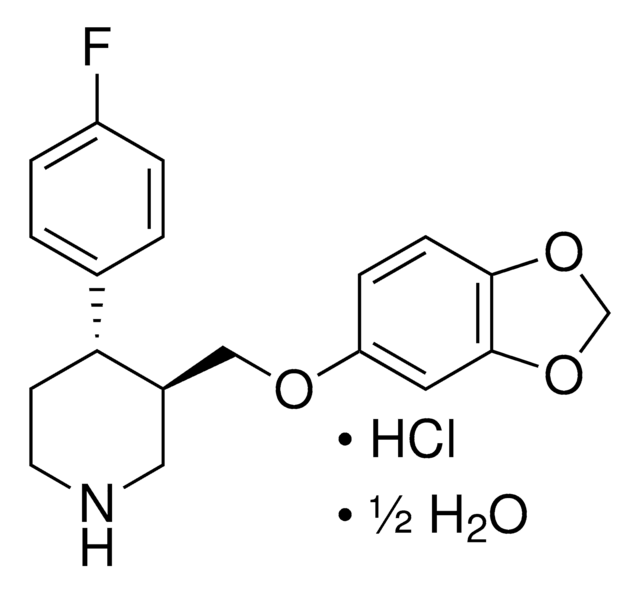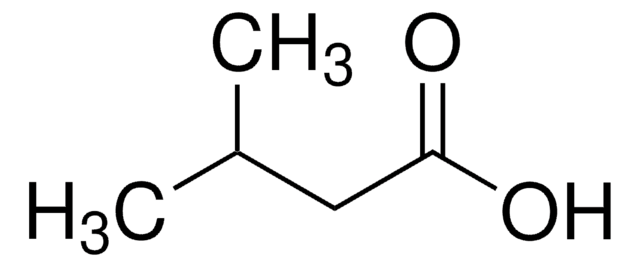Wichtige Dokumente
P5561
Propionsäure
BioReagent, suitable for insect cell culture, ~99%
Synonym(e):
Propansäure
About This Item
Empfohlene Produkte
Dampfdichte
2.55 (vs air)
Qualitätsniveau
Dampfdruck
2.4 mmHg ( 20 °C)
Produktlinie
BioReagent
Assay
~99%
Selbstzündungstemp.
955 °F
Expl.-Gr.
12.1 %
Methode(n)
cell culture | insect: suitable
Brechungsindex
n20/D 1.386 (lit.)
bp
141 °C (lit.)
mp (Schmelzpunkt)
−24-−23 °C (lit.)
Löslichkeit
H2O: soluble
Dichte
0.99 g/mL at 25 °C (lit.)
0.993 g/mL at 25 °C (lit.)
SMILES String
CCC(O)=O
InChI
1S/C3H6O2/c1-2-3(4)5/h2H2,1H3,(H,4,5)
InChIKey
XBDQKXXYIPTUBI-UHFFFAOYSA-N
Suchen Sie nach ähnlichen Produkten? Aufrufen Leitfaden zum Produktvergleich
Allgemeine Beschreibung
Anwendung
Sie haben nicht das passende Produkt gefunden?
Probieren Sie unser Produkt-Auswahlhilfe. aus.
Signalwort
Danger
H-Sätze
Gefahreneinstufungen
Eye Dam. 1 - Flam. Liq. 3 - Skin Corr. 1B - STOT SE 3
Zielorgane
Respiratory system
Lagerklassenschlüssel
3 - Flammable liquids
WGK
WGK 1
Flammpunkt (°F)
129.2 °F - closed cup
Flammpunkt (°C)
54 °C - closed cup
Persönliche Schutzausrüstung
Faceshields, Gloves, Goggles, type ABEK (EN14387) respirator filter
Analysenzertifikate (COA)
Suchen Sie nach Analysenzertifikate (COA), indem Sie die Lot-/Chargennummer des Produkts eingeben. Lot- und Chargennummern sind auf dem Produktetikett hinter den Wörtern ‘Lot’ oder ‘Batch’ (Lot oder Charge) zu finden.
Besitzen Sie dieses Produkt bereits?
In der Dokumentenbibliothek finden Sie die Dokumentation zu den Produkten, die Sie kürzlich erworben haben.
Kunden haben sich ebenfalls angesehen
Unser Team von Wissenschaftlern verfügt über Erfahrung in allen Forschungsbereichen einschließlich Life Science, Materialwissenschaften, chemischer Synthese, Chromatographie, Analytik und vielen mehr..
Setzen Sie sich mit dem technischen Dienst in Verbindung.















